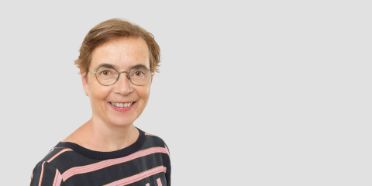- Institut Praktiken und Theorien der Künste
Dancing Together
What is at stake in dancing together? Focusing on the oeuvre of choreographer William Forsythe, our aim here is to understand the experience of dancing together, from the perspective of the dancers. This inductive study applies mixed methodology in considering Forsythe’s ‘Duo’ over the course of its history (1996-2016). Live and archival sources are analysed using approaches derived from ethnography, dance studies and cognitive science. Further investigation reveals that dancing together poses matters relevant to many different discourses (i.e. subjectivity, form, entrainment, intimacy, habitus, decision and discovery).
Steckbrief
- Lead-Departement(e) Hochschule der Künste Bern
- Institut Institut Praktiken und Theorien der Künste
- Forschungseinheit Kunst als Forschung
-
Förderorganisation
Swiss National Science Foundation
Volkswagen-Stiftung - Laufzeit (geplant) 01.08.2016 - 31.07.2019
- Projektverantwortung Priska Gisler und Christina Thurner
- Projektleitung Elizabeth Waterhouse
-
Projektmitarbeitende
Cyril Baldy
Gabriele Brandstetter (FU Berlin)
Allison Brown
Mark Coniglio
Florian Jenett
Jill Johnson (Harvard University)
James Leach (Université d'Aix-Marseille)
Guido Orgs (Goldsmiths University)
Regula Schelling
Riley Watts -
Partner
Freie Universität Berlin, Institut für Theaterwissenschaften
Goldsmiths University London, Department of Psychology
Harvard University, Dance Program
Université d'Aix-Marseille, Maison Asie Pacifique, CREDO
Introduction
This project considers the phenomenon of ‘dancing together’ in the work of choreographer William Forsythe (*1949 in New York), who is an important, controversial choreographer in the field of European contemporary dance. The professional dancers from Ballett Frankfurt/The Forsythe Company (1984–2015) have worked together for years, exclusively performing Forsythe’s pieces. In so doing, they have developed physical and cognitive virtuosity, learned to collaborate, practised vocal involvement (i.e. singing, speaking, discussing), and have taken on different roles. The perspective taken here is that Forsythe’s dancers are ideal, untapped resources for researching matters relevant to culture and subjectivity, especially with regard to the challenge of understanding such processes from an embodied perspective. We here attempt a longitudinal study of how dancers constitute and are constituted by a ‘choreographic culture’. We wish to understand in concrete terms what is at stake in dancing together, our goal being to define an array of interdisciplinary concepts and criteria for this phenomenon, based on the evidence of a specific case study. The expectation is that the interaction between the dancers and the experience of the performer(s) have largely been disregarded in dance studies due to a lack of access and of methodology, yet both are essential to understanding what choreography is and how subjects are constituted through it.
Methods
This research is designed to work inductively, foregrounding the seminal example of Forsythe’s ‘Duo’ (1996–2016). This short duet of synchronous and asynchronous movements provides many interesting aspects. It has been performed over the years by both male and female pairs, requires partnering without touch, is performed without an external musical pulse, involves the dancers’ breath, and has developed from choreographed steps into a structure that includes improvisation. Sources include both live and archival material, spanning the creation, rehearsal and performance of the piece. To analyse these, a mixed methodological approach is taken that combines performance analysis, movement analysis, ethnographic methods of fieldwork observation, elicitation and interviews, techniques of movement annotation and visualisation using Piecemaker and Isadore software, and quantitative approaches to movement and sound parsing.
Results
The primary product of this research will be a dissertation by the doctoral student Elizabeth Waterhouse. Further public outcomes will include a workshop, a public installation of the audio-video source material, and a website.
